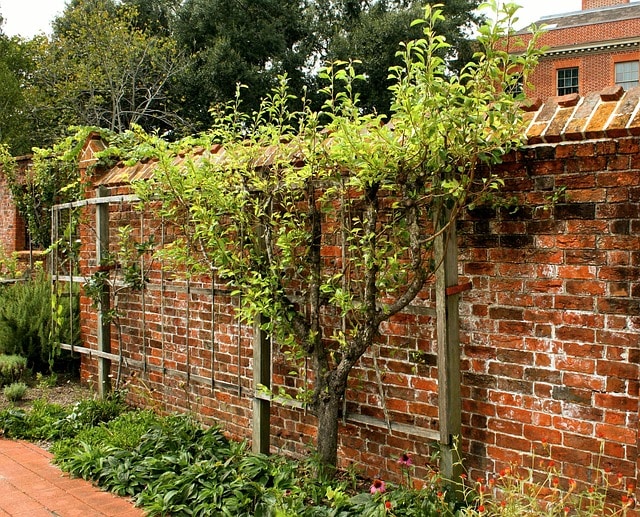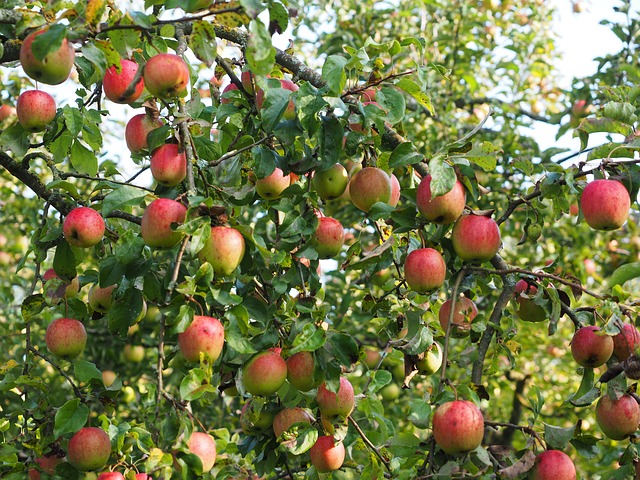Pug Fruit Trees to Keep Them Small

For those of you that are new to growing fruit trees, one of the scariest things to do is to cut or prune your tree. We often think we are going to hurt the tree or it’s too painful to sacrifice some of the growth that the tree has produced, but it’s often a necessary part of growing fruit trees. When done properly, you will quickly see how cutting a fruit tree enhances the vigor and health of your trees.
What does it mean to “pug” a fruit tree? Pugging a fruit tree, simply means to cut a fruit tree down to a smaller size when initially planting. Often times the cut is made at around knee height or around 24 inches. This is a common practice when planting bare-root fruit trees, but can be done with any young tree. Let’s take a further look at why pugging can benefit your fruit trees.
Benefits of Pugging a Fruit Tree
· More Manageable Size Tree
· More vigor with established root system
· Fruit that is more accessible
· Enough Fruit for your needs
· Plant more trees in smaller space
· Healthy and vigorous trees
What is a Bare-Root fruit tree?

A bare-root fruit tree is simply a fruit tree that is shipped without a pot and soil. Bare-root fruit trees consist of trees that go dormant in the winter and lose all their leaves.
Trees like peaches, plums, apples, apricots, cherries, mulberries, jujubes, or any stone fruit types are all examples of trees that may be shipped bare root.
During dormancy, trees have stopped actively growing, thus all the energy is stored in the tree, which allows the tree to easily be moved. It is much easier to ship and buy a tree without a heavy pot of soil at the base of the tree.
Things to Consider with a Bare-Root Fruit Tree
Bare-root fruit trees have grown for a couple of years in the nursery. When ready to ship, these trees are uprooted from the ground and the soil is removed from the root system.
During the uprooting process, much of the established root system can be severed. So after removal, the top growth remains the same, while the root system below has been reduced. This can cause the tree to be out of balance.
The beginner grower may just plant the tree as is without considering these factors and then wonder why the tree struggles to grow. The roots have to catch up with what is up top which can slow the growth.
Pruning some of the top growth at planting can help bring the balance back to the tree and allow it to grow more steadily.
Benefits of Pugging a Fruit Tree

Taking into consideration the factors previously discussed, it seems necessary to at least cut back some of the top growth of a bare root fruit tree, but how much?
Pugging suggests cutting the tree back to around knee height when planting or around 24 inches. Doing this creates a lower base to the tree and can help to dwarf the tree.
Having a lower structure makes it easier to harvest the fruit, because it keeps the fruit more within reach. For those of us in urban settings or with smaller back yards, keeping trees at a manageable size is ideal. When our trees are smaller it allows us to add more varieties and have a sufficient amount of fruit for our needs without excess.
Typically when a cut is made several offshoots come from the cut area. Selecting three or four of these offshoots will help create a strong structure and foundation for your future tree. One thing to consider when pugging your fruit trees is where the tree was grafted.
This is the point at where the root stock was connected to the trunk or scion. Usually the graft is near the base of the tree, but isn’t always the case. It’s generally easy to identify the graft because it usually looks like a knot or slight bulge around the graft area.
I made the mistake of pugging a mulberry tree that was grafted high. It was top grafted, so when I pugged I ended up cutting out the graft. If you have a multi-grafted tree meaning more than one variety grafted to the rootstock, I wouldn’t recommend attempting to pug.
Once you lose the graft it just becomes whatever variety the rootstock is, which is often an undesirable variety.
Pugging the Tree

When making the cut, it’s a good idea to cut at about a 45 degree angle just above a bud node. This node or nodes below are where new shoots will come from.
Anytime you are making a pruning cut on a fruit tree make sure that your pruning shears are sterilized with rubbing alcohol. This will prevent the possibility of spreading disease from tree to tree. Check out my recommended product page here for some of the tools that I use and recommend.
Cutting at a 45 degree angle will allow the cut to heal properly because it allows for the proper amount of exposure. Not only is pugging great for stone fruit trees, but can also be an effective practice for young tropical trees as well.
Pugging has been a common practice for high density mango tree orchards. One of my favorite books that I recommend for high density planting is Grow a Little Fruit Tree.
All in all, I highly recommend pugging your newly planted young trees, especially bare-root fruit trees. It may be a painful thing to do, you’ll see the benefits later on. You will have a healthy, vigorous tree that produces optimal levels of fruit for years to come.
Please comment below on anything that you enjoyed from this post or your experience with pugging question.
